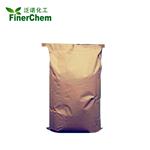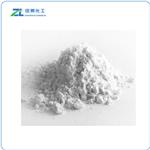- 2-Naphthol
-

- $2.00 / 25KG
-
2025-04-03
- CAS:135-19-3
- Min. Order: 1KG
- Purity: 99%
- Supply Ability: 1000mt/year
- 2-Naphthol
-

- $99.00 / 1kg
-
2025-04-02
- CAS:135-19-3
- Min. Order: 1kg
- Purity: 99%
- Supply Ability: 20ton
- Beta Naphthol
-

- $0.00 / 1kg
-
2025-04-02
- CAS:135-19-3
- Min. Order: 1kg
- Purity: 99%
- Supply Ability: 1000kg
|
| | 2-Naphthol Basic information |
| | 2-Naphthol Chemical Properties |
| Melting point | 120-122 °C(lit.) | | Boiling point | 285-286 °C(lit.) | | bulk density | 300kg/m3 | | density | 1,28 g/cm3 | | vapor density | 4.97 (vs air) | | vapor pressure | 10 mm Hg ( 145.5 °C) | | refractive index | 1.5762 (estimate) | | Fp | 153 °C | | storage temp. | Store below +30°C. | | solubility | methanol: soluble1g/10 mL, clear, colorless to light yellow | | pka | 9.51(at 25℃) | | form | Powder, Crystals or Granules | | color | White | | PH Range | Non& uorescence (8.5) to blue & uorescence (9.5) | | Odor | faint phenol-like odor | | Water Solubility | 1 g/L (20 ºC) | | λmax | 226nm, 265nm, 275nm, 286nm, 320nm, 331nm | | Merck | 14,6384 | | BRN | 742134 | | Stability: | Stable. Combustible. Dust may form explosive mixture with air. Incompatible with strong oxidizing agents, phenol. | | Major Application | Display device, semiconductors, photoimaging materials, inks, toner, chalk, security paper, molding materials, tin plating method, rubber, adhesive, leather, detergent, hair dyes, antimitotic drug, anticancer agent, antiinflammatory agent, treatment of acne vulgaris (pimples) and other dermal ailments (rashes, scratches, blemishes, hair loss), disorders | | InChIKey | JWAZRIHNYRIHIV-UHFFFAOYSA-N | | LogP | 1.89 at 20℃ | | CAS DataBase Reference | 135-19-3(CAS DataBase Reference) | | NIST Chemistry Reference | 2-Naphthalenol(135-19-3) | | EPA Substance Registry System | 2-Naphthalenol (135-19-3) |
| Hazard Codes | Xn,N | | Risk Statements | 20/22-50 | | Safety Statements | 24/25-61 | | RIDADR | UN 3077 9/PG 3 | | WGK Germany | 2 | | RTECS | QL2975000 | | F | 8 | | Autoignition Temperature | 430 °C | | TSCA | Yes | | HazardClass | 9 | | PackingGroup | III | | HS Code | 29071590 | | Hazardous Substances Data | 135-19-3(Hazardous Substances Data) | | Toxicity | LD50 orally in Rabbit: 1960 mg/kg LD50 dermal Rabbit > 10000 mg/kg |
| | 2-Naphthol Usage And Synthesis |
| Chemical Properties | 2-Naphthol is a white, crystalline solid. Slight phenolic odor. Darkens in air and on exposure to light. 2-Naphthol [135-19-3] b-naphthol, 2- naphthalenol, 2-hydroxynaphthalene, C10H8O, Mr 144.16, forms colorless plates upon sublimation, which darken on exposure to air or light. Unlike 1-naphthol it is nonvolatile in steam. 2-Naphthol is reduced with sodium or with hydrogen in the presence of a catalyst to give mainly 1,2,3,4-tetrahydro-2-naphthol (unlike 1- naphthol which gives the arylphenol under the same conditions). | | Physical properties | White glossy flakes or white powder. Insoluble in water, soluble in ethanol, ether, chloroform, glycerol and alkali solution. | | Uses | Has been used as antiseptic, anthelmintic and counter-irritant in alopecia. | | Uses | 2-Naphthol is used in the manufacture of dyes, perfumes, and medicinal organics, and in the production of antioxidants for synthetic rubber. | | Definition | ChEBI: 2-naphthol is a naphthol carrying a hydroxy group at position 2. It has a role as an antinematodal drug, a genotoxin, a human xenobiotic metabolite, a mouse metabolite, a human urinary metabolite and a radical scavenger. | | Application | It is used to produce Tobias acid, J acid, 2-hydroxy-3-naphthoic acid and azo dyes, and it is the raw material for rubber antioxidants, mineral dressing agents, fungicides, antiseptics, preservatives, etc.
As feed preservative. In China, it can be used for citrus preservation, the maximum dosage amount is 0.1 g/kg and the residue amount should be no more than 70 mg/kg.
2-Naphthol, also called β-naphthol, 2-naphthalenol, is the intermediate for plant growth regulator, 2-naphthoxyacetic acid.
As analytic agent, absorbent of ethylene and carbon monoxide, and fluorescence indicator.
Important organic raw material and dye intermediate, used to produce Tobias acid, butyric acid, β-hydroxynaphthoic acid and used to produce N-phenyl-2-naphthylamine, Diafen NN and other antioxidant, organic pigments, and fungicides.
For the detection of bromine, chlorine, chlorate, niobium, copper, nitrite, and potassium. Substrate for fluorometric assay of phenol sulfotransferase. Acid and alkali indicator, dyes, organic synthesis, qualitative determination of allyl alcohol, methanol, chloroform, etc. Absorbent of carbon monoxide, ethanol, and fluorescence indicator. Determination of carbon monoxide, copper, nitrite, and potassium. Ethylene absorbent. | | Preparation | 2-Naphthol is produced by
caustic fusion of naphthalene-2-sulfonic acid. Typically, the sodium salt of the
sulfonic acid is added gradually to 50 % sodium
hydroxide liquor at 300℃; the melt is then
heated further at 320℃ in a gas-fired iron vessel
with vigorous agitation. After completion of the
reaction, the melt is run into excess water, possibly including filtrate from the previous batch at a
proven tolerable level, and the naphtholate solution is neutralized to pH 8 with dilute sulfuric
acid. If the temperature is maintained at >100℃ during neutralization, the crude product comes
out of solution as an oil, which is separated,
washed with hot water, and distilled under vacuum to give pure 2-naphthol. The molten material
is processed through a flaker to give the final
product for packaging. The fusion yield is about
80 % of the theoretical value, resulting in an
overall yield of 70 % based on naphthalene.
Typical specifications for 2-naphthol are clear
solution in dilute caustic soda, mp 120.5℃,
and 1-naphthol content<0.3 %.
| | Reactions | 2-Naphthol is naphthalene homologues of phenol, with the hydroxyl group being more reactive than in the phenols.2-Naphthol converts to 2-naphthalenethiol by reaction with dimethylthiocarbamoyl chloride via the Newman–Kwart rearrangement. | | Synthesis Reference(s) | Journal of the American Chemical Society, 72, p. 4884, 1950 DOI: 10.1021/ja01167a009
Synthesis, p. 437, 1985 DOI: 10.1055/s-1985-31235 | | General Description | 2-Naphthol is a hydroxyarene molecule, which when electronically excited forms strong acid. Excited 2-Naphthol dissociates only in water. It has a slight phenolic odor. It is incompatible with strong oxidizing agents, strong bases, acid chlorides and acid anhydrides. It is one of the most commonly used fluorescence dye. | | Health Hazard | Although the toxicity of 2-naphthol is of low order in test animals, ingestion of large amounts may result in nausea, vomiting, diarrhea, abdominal pain, convulsions, and hemolytic anemia. Death may result from respiratory failure. The oral LD50 value in rats is in the range 2000 mg/kg. 2-Naphthol is slightly more toxic than 1-naphthol [9015-3], the oral LD50 value of which is in the range 2500 mg/kg.
Skin contact can produce peeling of the skin and pigmentation. | | Fire Hazard | Noncombustible solid. | | Chemical Reactivity | 2-naphthol can be oxidation with ferric chloride forms 2,20 -dihydroxy-1,10 -binaphthyl, with any blue coloration indicating the presence of 1- naphthol.
Air oxidation at 300℃ with a vanadium pentoxide catalyst also yields 1,10 -bi-2-naphthol, which dehydrates at higher temperature to the oxide and finally decomposes to give benzoic acid.
2-naphthol can reacte with phosphorus pentachloride at 150℃ gives 2-chloronaphthalene or at lower temperature, tri-2-naphthyl phosphate (mp 111℃), which can be isolated after treatment of the reaction mixture with alkali.
Reaction with one equivalent of bromine in acetic acid gives 1-bromo-2-naphthol, whereas excess bromine yields 1,6-dibromo-2-naphthol. The latter is readily debrominated in dilute mineral acid to yield 6-bromo-2-naphthol. | | Safety Profile | Poison by ingestion,
inhalation, and subcutaneous routes.
Mutation data reported. A skin and eye
irritant. Combustible when exposed to heat
or flame. To fight fire, use CO2, dry
chemical. Incompatible with antipyrine, camphor, phenol, ferric salts, menthol,
potassium permanganate and other
oxidzing materials, urethane. | | Potential Exposure | A potential danger to those involved
in rubber antioxidant production, synthesis of dyes; leather
processing; fungicides, pharmaceuticals, and perfumes.
Used as an antioxidant for fats, oils; as an antiseptic; in
insecticides. | | Shipping | UN2811 Toxic solids, organic, n.o.s., Hazard
Class: 6.1; Labels: 6.1-Poisonous materials, Technical Name
Required. UN3077 Environmentally hazardous substances,
solid, n.o.s., Hazard Class: 9; Labels: 9-Miscellaneous hazardous
material, Technical Name Required. | | Purification Methods | Crystallise 2-naphthol from aqueous 25% EtOH (charcoal), H2O, *benzene, toluene or CCl4. Alternatively, extract it repeatedly with small amounts of EtOH, followed by dissolution in a minimum volume of EtOH and precipitation with distilled water, then drying over P2O5 under vacuum. It has also been dissolved in aqueous NaOH and precipitated by adding acid (repeat several times), then precipitated from *benzene by addition of heptane. Final purification can be by zone melting or sublimation in vacuo. The 4-nitrobenzoate has m 104o (from EtOH). [Bardez et al. J Phys Chem 89 5031 1985, Kikuchi et al. J Phys Chem 91 574 1987, Beilstein 6 IV 4253.] | | Properties and Applications | white crystalline, with phenol smell. Industrial goods for hoar chip or powder. Melting point 121 ~ 123 ℃, 285 ℃ ~ 286 boiling point, flash point 161 ℃. This product soluble in water, ethanol, ethyl ether, chloroform, glycerin and alkali solution, can the sublimation, with steam evaporate out; Long storage or light color in turn dark, can happen oxidation, reduction, nitrification and nitrosation reaction, and products, light and heat, halogenating role, etc. | | Incompatibilities | Dust or powder may form explosive
mixture with air. Incompatible with oxidizers (chlorates,
nitrates, peroxides, permanganates, perchlorates, chlorine,
bromine, fluorine, etc.); contact may cause fires or explosions.
Keep away from alkaline materials, strong bases,
strong acids, oxoacids, epoxides, iron salts; 2,3-dimethyl-1-
phenyl-3-pyrazolin-5-one (antipyrine); camphor, phenol,
menthol, urethane. | | Waste Disposal | Mix with flammable solvent
and atomize into an incinerator. |
| | 2-Naphthol Preparation Products And Raw materials |
|